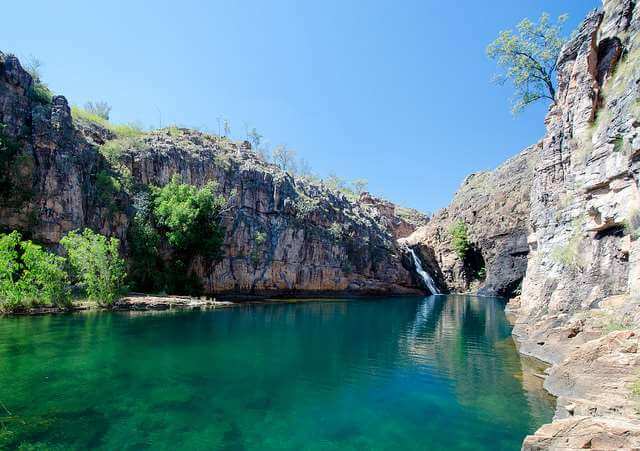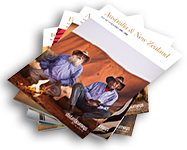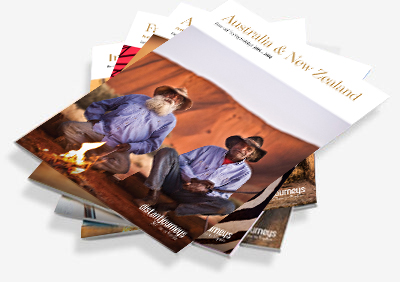Guided tours of Australia and New Zealand are packed full of culture, rare sights and once-in-a-lifetime opportunities. Many of which, can be experienced with a visit to the breath-taking Kakadu National Park in Australia. This World Heritage sight, located just three hours east of Darwin, is filled with extraordinary sights, from stunning landscapes to rare Aboriginal rock art. And that’s just for starters. So if you’re undecided on whether or not to add a visit to Australia’s Kakadu National Park to your itinerary, here are five reasons why you should…
-
The journey there is part of the experience…
If you’re unsure of what to do in Kakadu National Park, but like making the most out of any experience, then the fun can start before you even arrive. Setting off from Darwin you can journey along the 250-kilometre Nature’s Way touring route, which takes you though a wonderful wilderness, submerged in rich Aboriginal culture and history. Along the way, you can stop off at the Fogg Dam Conservation Reserve and catch some of the wildlife that inhabit the lower Adelaide River. Or if you dare, you can get up and close and personal with saltwater crocodiles on the exciting Jumping Crocodile Cruise.
-
Its fascinating Aboriginal Art
Now you’ve arrived, what is there to see in Kakadu National Park? Well, in a country surrounded by astonishingly beautiful natural landscapes, you may be surprised to find some man-made landmarks that are just as impressive. The park is home to one of the world’s largest collections of Aboriginal rock art. At Nourlangie Rock you’ll find the work of the Dreamtime ancestors, whilst over at Ubirr Rock you’ll see paintings of the Rainbow Serpent and some of the greatest displays of X-ray art. Then, in the Anbangang gallery, you can view the exciting painting of Lightening Man – the controller of violent lightening storms. The artwork illustrates social, culture and natural history, so be sure to find out the stories behind it all.
-
The beautiful flora and fauna
The park holds an exceptional array of wildlife and plants. If you take the stunning Bubba Walk through the wetlands, you’ll find the trail lined and padded with beautiful paperbarks, pandanus, cycads and lotus lillies. Also keep an eye out for the different species of birds and fish because the park holds over a third of the Australian bird species and about a quarter of Australia’s freshwater fish species.
-
Kakadu’s seasons cater for everyone
A visit to Kakadu National Park can be enjoyed throughout the different seasons as each season has its own pros and cons. It’s for you to decide what season suits you best! But to help you, the local Bininj people have classified six seasons to describe what the Kakadu Park encounters each year, with each one dramatically different to the last…
- GudJewg – From January to March it gets very, very wet. With thunderstorms and lightening combined with heat and humidity, tourists are in for a stormy experience.
- Bang Gereng – In April the skies clear and water flows peacefully. With clear weather and calmer winds, it’s a popular time to visit.
- Yegge – May to June is less humid and relatively cool. With attractions such as Jim Jim and Twin falls opening for tourists, people find Yegge season the best to travel in.
- Wurrgeng – June to August is much cooler with daytime temperatures around 30 degrees.
- Gurrung – August to October is hot and dry making it much more comfortable if you enjoy the heat.
- Gungmelend – October to December is pre monsoon season, so expect lots of showers.
-
Its enchanting gorges and falls
Kakadu Park plays host to some of the world’s most spectacular gorges and falls. Koolpin and Barramundi Gorge are both easily accessed by car. Whilst the iconic Twin Falls and Jim Jim Falls can be enjoyed up close, with canoe excursions taking place in the Yegge season.
Image by Markus Reil via Flickr













